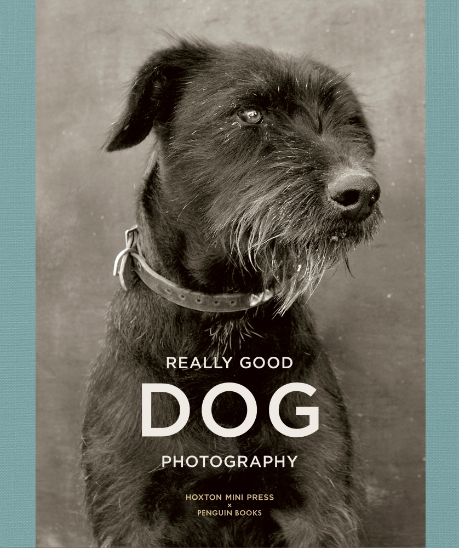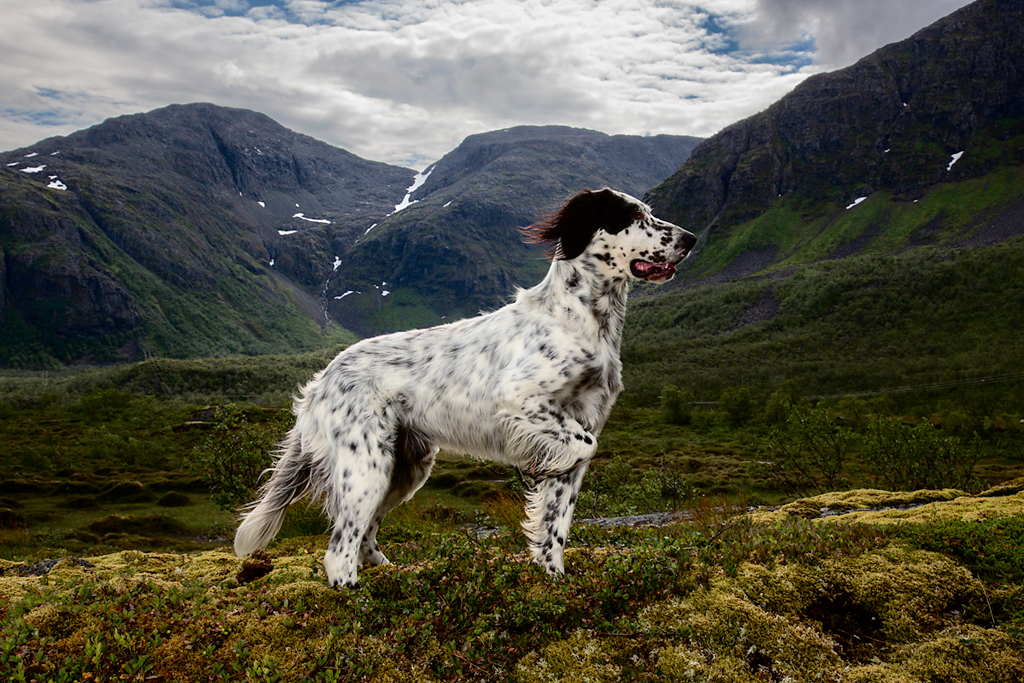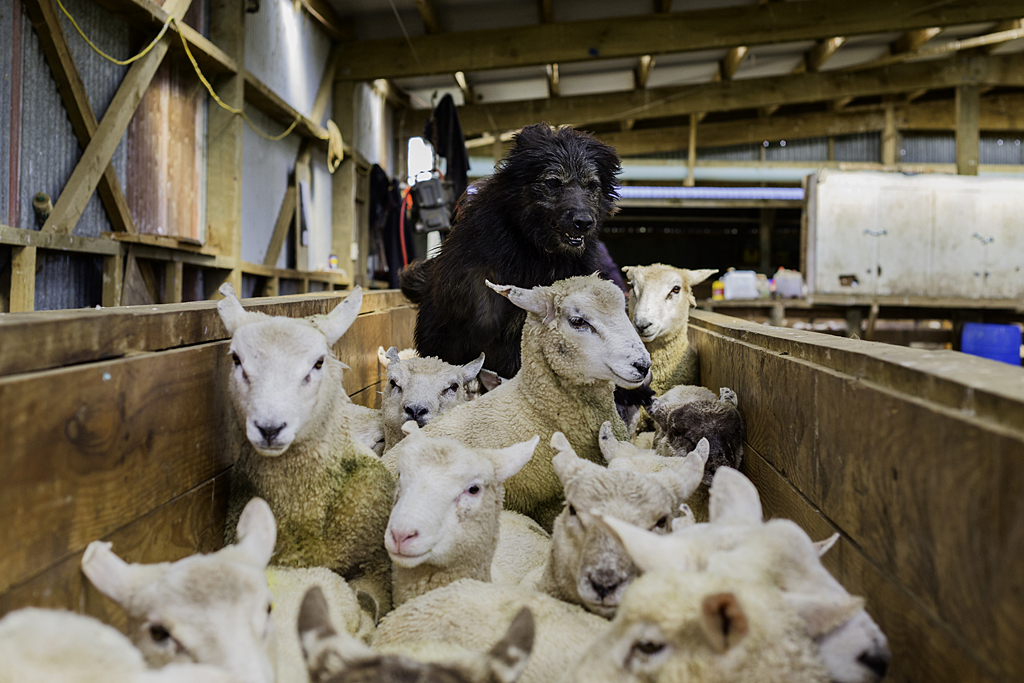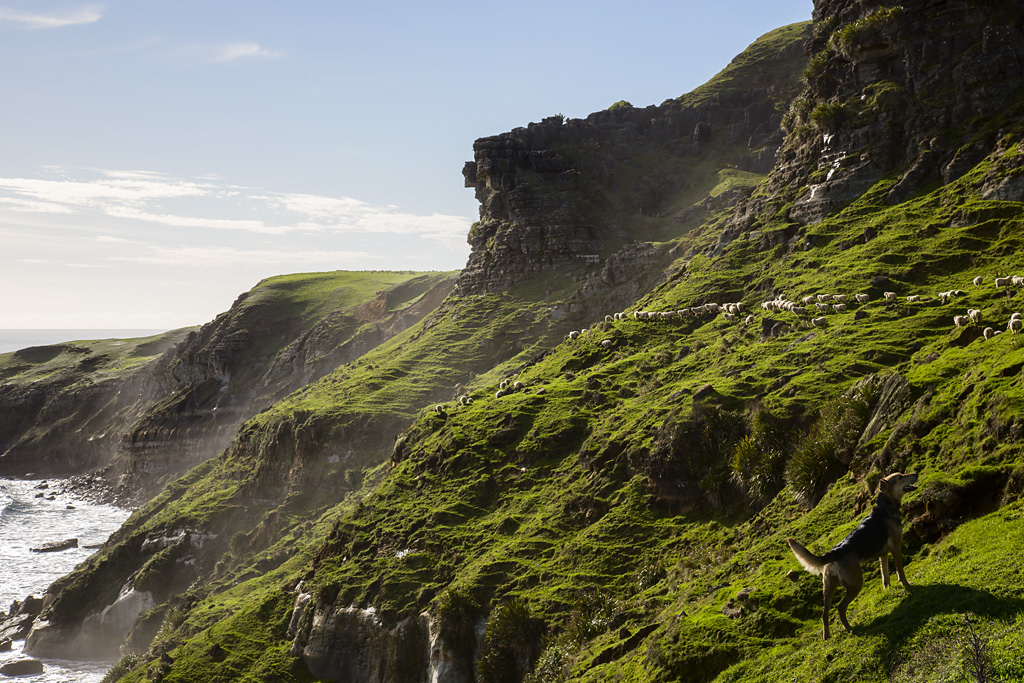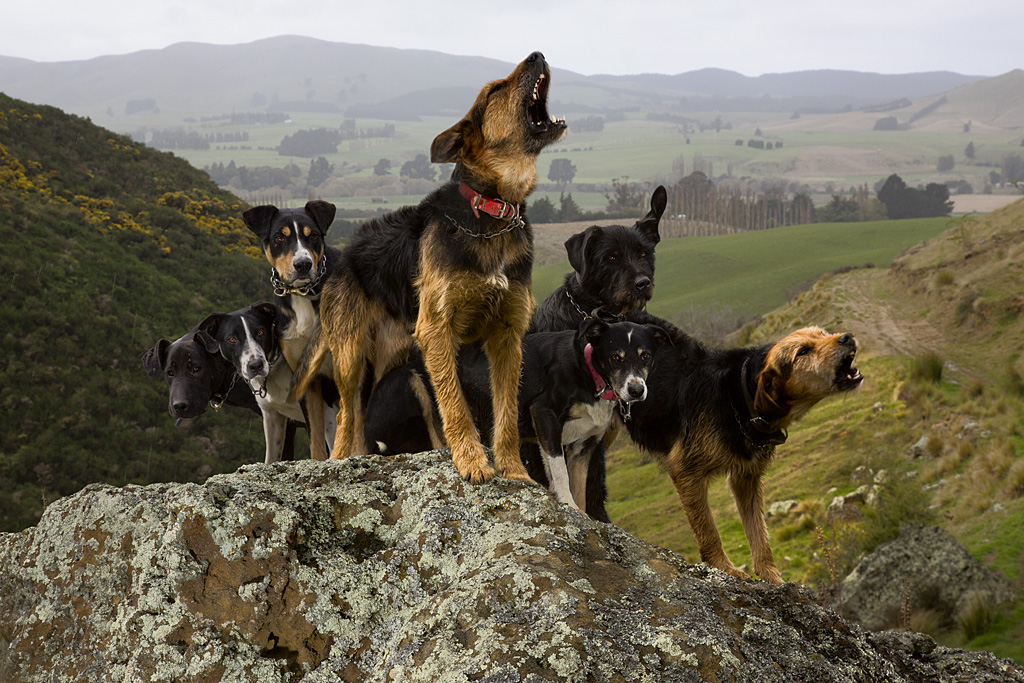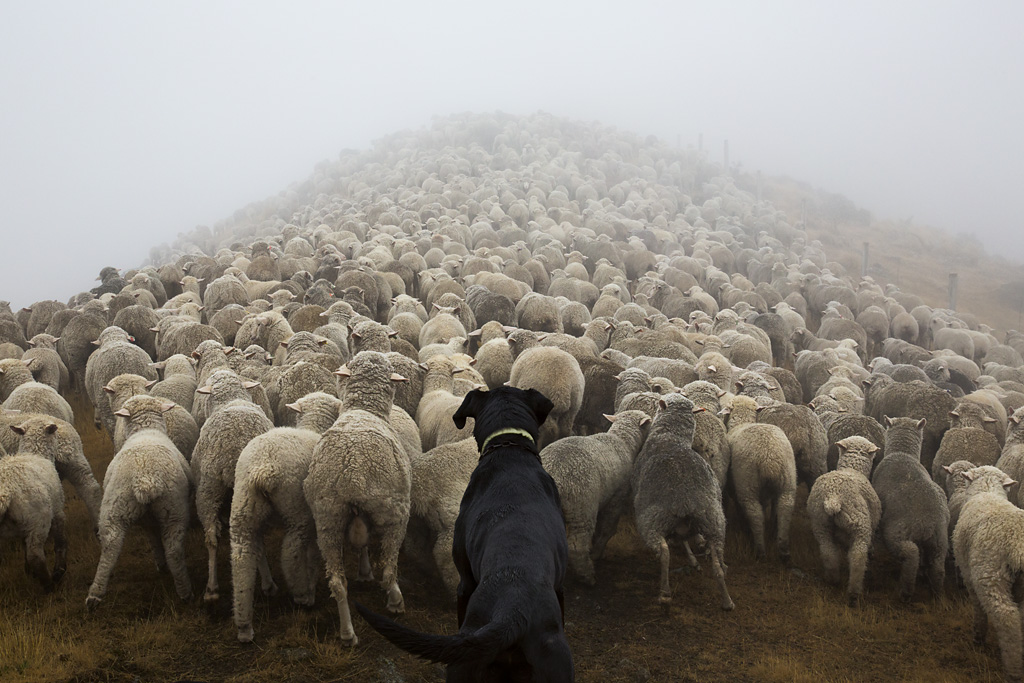Andrew Fladeboe featured in a 'Really Good Dog Photography' Book
Andrew Fladeboe’s photographs will be included in a new publication – Really Good Dog Photography – coordinated by Martin Usborne & Ann Waldvogel of Hoxton Mini Press. Published by the Particular Books division of Penguin Books, the book will be available as of 5 October 2017. Fladeboe’s pictures are featured alongside those of Alec Soth, Peter Hujar, and Elliott Erwitt, among others.
On childhood visits to New York's Natural History Museum, Andrew Fladeboe loved to wander among the dioramas - those vivid presentations of the natural world in which stuffed animals are placed in a three-dimensional foreground and in front of a painted backdrop, to lend the illusion of distance.
They stood Fladeboe in excellent stead when he began work on The Shepherd's Realm, a series of photographs in which he presents working dogs in the specific landscape in which they perform their task. 'I think of my work almost as photo translations of a diorama scene,' he says.
The series isn't limited to shepherd dogs - its title is meant to suggest a 'pastoral past' that we all share, far back in time. Fladeboe was inspired to begin while on an artist's residency in the Scottish Highlands in 2011. Here, he met Molly, a mixed-breed dog who protected the local farm's free-range chickens from foxes and other beasts. 'Her care-taking attitude and her free-roaming spirit (I never saw her on a leash) formed a picture in my mind of what the perfect pastoral dog should be,' he says. 'Loyal, protective, loving, sagacious.'
Two years of research followed, in which he fell head over heels 'with dogs and their history. Before the 1800s, most dogs served a purpose, and were bred for that purpose, not for arbitrary physical traits in mode at the time.' His findings led him to the conclusion that 'no one was photographing dogs in the way that I saw them - I knew I could do it in a different way.'
The project began in earnest in 2013, in Norway, where Fladeboe has ancestral roots. He concentrated on dogs belonging to farmers and breeders, whom he contacted via internet forums. He found the landscape there 'grand, often sublime ... without that, the photographs wouldn't have so much power'.
Next on his list was New Zealand, which has the second-highest population of working dogs in the world (Russia has the first highest). 'Farms in New Zealand are busy places so it took more convincing on my part to get access,' he says, 'but I volunteered to work in exchange for room and board at my first stay, and then I relied on word of mouth.' Shorter stays in France, Scotland and the Netherlands followed.
As the series grew in scope, he became fascinated by the fact that we still rely on dogs so much. 'It's amazing, in this technology-focused era, that animals can do some jobs better than us or our machines,' he says. 'Dogs have been by our side for at least thirty thousand years, evolving to help us in a number of working roles. They straddle the line between man and nature, and are a perfect conduit to illustrate nature's greater power, in contrast to our human-centric point of view. To me, they are proof of a greater order to things.'
Martin Usborne
